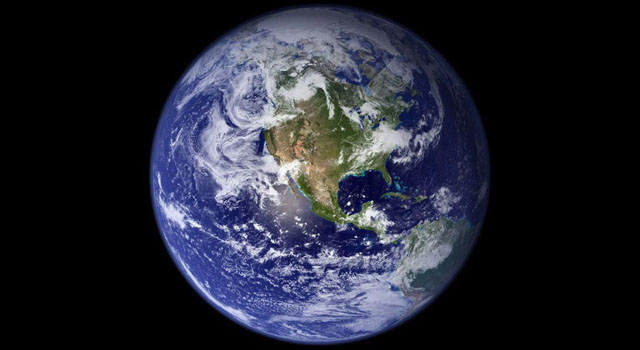On 'One Strange Rock,' How Terraforming Makes Our Planet Even Stranger

Scientists and science-fiction writers have long entertained the idea of "terraforming" Mars to make it habitable for humans. But to see examples of terraforming in real life, we need not look any farther than the very soil on which we stand.
Not only have humans been terraforming Earth for thousands of years by building civilizations, but just about every organism that has lived here over the last 4 billion years has helped shape our planet into what it is today — for better or for worse.
From trees to fungi to fish, the creatures of Earth have had an extraordinary impact on our planet's geology in ways that may surprise you. In a new episode of "One Strange Rock," astronauts will explain how life gave Earth some of its most distinct features. [Photos: Amazing Images of Earth from Space]
The new documentary series by National Geographic tells the story of Earth from the perspectives of astronauts who have seen it from space (and Will Smith, who hosts the show). When looking back at our planet from orbit, astronauts gain a new appreciation for the impact life has had on oceans, the atmosphere and even the creation of continents, retired NASA astronaut Mike Massimino explains on tonight's (May 7) episode.
"What you see are changes in the Earth that took place over sometimes millions of years or longer," Massimino says in the show. "I think life, no matter what form it is — whether it's a simple form like [a] lichen or an animal or a more complicated form of life like us — whatever level that life-form takes, it is going to change its planet. it might just take a while to do it."
Lichens are plant-like organisms (made up of fungi and algae) that may look innocuous, but without them, Earth's land would never have split up into continents. By breaking down rock with their fungal filaments, lichens release microscopic particles into the ocean. These particles can trap little bits of water, and "over time this locked-up water is pulled deep inside the earth, where it helps mantle rock melt and flow more easily," leading to volcanic eruptions, Massimino says. "The amazing thing is that all this lava means new land is formed that wouldn't be there otherwise. Life helps create the land."

While lichens terraform Earth over long periods of time, other species can have a much more immediate impact. Humans are one obvious example, with our cities, dams and other types of infrastructure that we can build in only a matter of months. But other creatures terraform Earth in more unexpected ways. Take the parrotfish, for example. Over the course of one year, a single parrotfish eats enough coral to excrete 1 ton of sand. For example, the white sand beaches like those around Hawaii are almost entirely made up of "sand that came out of the wrong end of a fish," Smith says in the show.
Get the Space.com Newsletter
Breaking space news, the latest updates on rocket launches, skywatching events and more!
In orbit, astronauts can see the white sand beaches, the diatoms that turn ocean waters into varying shades of blue, and the city lights that show the extent of human civilization. Although the cities are gorgeous seen from space, not all of humanity's changes to our planet are a pleasant sight. "When you're floating above the Earth, you see many different examples of how our desire for natural resources is changing the planet — and not always in a good way," Massimino says in the show. Mining in particular "leaves a blight on the surface of the planet, and it's ghastly sometimes to see," adds NASA astronaut Leland Melvin.
Find out more about how humans and other forms of life have changed our planet, and see some amazing views of our terraformed Earth from space by tuning in to "One Strange Rock" on the National Geographic Channel tonight (May 7) at 10 p.m. EDT/PDT (9 p.m. CDT).
Email Hanneke Weitering at hweitering@space.com or follow her @hannekescience. Follow us @Spacedotcom, Facebook and Google+. Original article on Space.com.
Join our Space Forums to keep talking space on the latest missions, night sky and more! And if you have a news tip, correction or comment, let us know at: community@space.com.

Hanneke Weitering is a multimedia journalist in the Pacific Northwest reporting on the future of aviation at FutureFlight.aero and Aviation International News and was previously the Editor for Spaceflight and Astronomy news here at Space.com. As an editor with over 10 years of experience in science journalism she has previously written for Scholastic Classroom Magazines, MedPage Today and The Joint Institute for Computational Sciences at Oak Ridge National Laboratory. After studying physics at the University of Tennessee in her hometown of Knoxville, she earned her graduate degree in Science, Health and Environmental Reporting (SHERP) from New York University. Hanneke joined the Space.com team in 2016 as a staff writer and producer, covering topics including spaceflight and astronomy. She currently lives in Seattle, home of the Space Needle, with her cat and two snakes. In her spare time, Hanneke enjoys exploring the Rocky Mountains, basking in nature and looking for dark skies to gaze at the cosmos.
